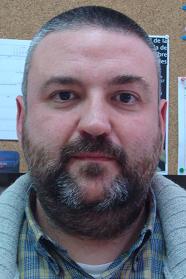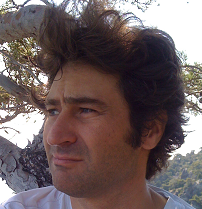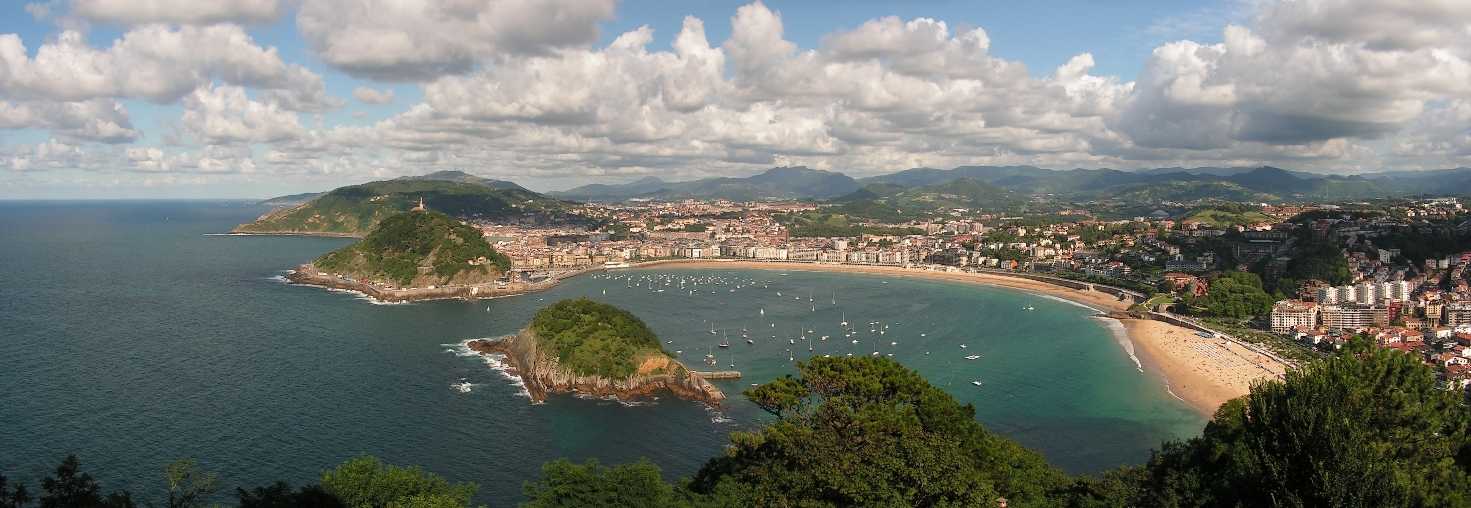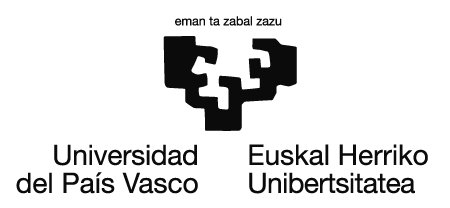|
Keynote 1 Wednesday 11:00 - 12:00 |
Ibone Amezaga “Ecosystem services and human wellbeing" |
 |
Ibone Ametzaga Arregi, Doctor by the Imperial College London, is lecturer at the Department of Plant Biology and Ecology of the University of the Basque Country. Her research topics are centred on Biodiversity, mainly terrestrial ecosystems, studying the impacts, restoration, developing tools to improve their state and knowledge generation for the development of environmental policies for landscape management based, nowadays, on Ecosystems Services. She has worked at the Public University of Navarra and University of Vigo. She has supervised several PhD and MSc thesis. The research team is within the UNESCO Chair for Sustainable Development and Environmental Education that has set itself the challenge to step up research and specialized studies on Sustainability and Environmental Education from an interdisciplinary perspective, encompassing natural and social sciences. Our working methodology involves collaboration between the world of academia, social and political stakeholders, and society in general, as all activities are aimed at contributing to the solution of real problems. |
|
Ecosystem services can be defined as: the products of ecological functions or processes that directly or indirectly contribute to human well-being, or have the potential to do so in future; or, as the benefits of nature to households, communities, and economies. They represent ecological processes and resources expressed in terms of the goods and services they provide. Ecosystem services fall under the general categories of provisioning (food, water, energy), regulating (flood control, erosion prevention), cultural (recreation, spiritual value, sense of place) and supporting (nutrient cycling, oxygen). One of the major challenges remains the optimization of the land management in such a way that ecosystem service will be provided optimally, not only according to wellbeing and human activities at (most) suitable places, but also according to optimal chemical, physical and environmental characteristics. All these factors are helpful to model future land-use needs, in addition to the energy and elemental flow across soil, water and environmental compartments. However, there needs to be an agreement tohave the best landscape management as there can be trade-offs among ecosystem services. Thus, studying the trade-offs between biodiversity, carbon storage and water flow regulation in a biosphere reserve area using Geographic Information System (GIS)-based approach showed how the inclusion of ecosystem services in conservation planning has a great potential to provide opportunities for biodiversity. protection, as the non-protected natural forests, such as the mixed-oak, beech and riparian forests, are biodiversity hotspots, and they contribute to the carbon storage and water flow regulation services; however, strategies of conservation based only on specific ecosystem services may be detrimental to the biodiversity and may cause other environmental problems as pine and eucalyptus plantations contribute to carbon storage and water flow regulation but have negative effects on biodiversity and cause environmental problems. On the other hand, it is important to quantify cultural ecosystem services (ES) and their spatial distribution in the landscape based on ecological structure and social evaluation approaches. Thus, GIS-based approach was used to estimate and map the provision of recreation and aesthetic services supplied by ecosystems in a peri-urban area. Data of two different public participation processes (frequency of visits to 25 different sites within the study area and aesthetic value of different landscape units) were used to validate the maps. A weak spatial correlation was found between aesthetic quality and recreation provision services, with an overlap of the highest values for both services only in 7.2 % of the area. Thus, decision-makers indicated that the results were considered useful to identify areas that can be targeted for improvement of landscape and recreation management. Moreover, the ecosystem services approach has shown to help the understanding among different stakeholders. The conflict between conservation andtimber production is shifting in regions such asBiscay (Basque Country) whereplanted forests are no longer profitable withoutpublic subsidies and environmentalist claim thatpublic subsidies should be reoriented to the regenerationof natural forest. Based on ecosystem services anapproach was designed that integrated scientific knowledge andstakeholders’ demands to provide decision-makingguidelines for the development of new landscapeplanning strategies. Two methodologies where used:a participatory process to develop a community vision for the region’s sustainable future considering the opportunities andconstrains provided by the landscape and its ecosystems and GIS. The results from the spatial analysis converged with those from the participatory process in the suitability of promoting, where possible and appropriate, natural forest ecosystems restoration. This iterative learning and decision making process is already showing its effectiveness for decision making, with concrete examples of how the results obtained with the applied approach are being included in planning and decision-making processes. |
|
|
Keynote 2 Thursday 15:30 - 16:30 |
Doctor Luis Fenipe Callado “New computational applications for drug addiction” |
 |
Luis F. Callado has 25 years of experience in neurochemical studies and functional responses of receptors to psychoactive drugs. His work is focused on neurobiology of receptors and transduction systems in depression, drug dependence and other psychiatric disorders. Current research involves the neurochemical study of α2 adrenoceptors and their role in some neuropsychiatric disorders. For this purpose, Dr. Callado is also interested in the characterization and development of new chemical compounds with high affinity and selectivity for the α2 adrenoceptors. These studies include the use of radioligand binding techniques, biochemical assays as well as in vivo methods. All these techniques and methodologies are currently functioning in his laboratory. The experience and qualifications of Dr. Callado in the field are clearly represented in the number and level of his publications: to date, he has published 86 papers in high-standard peer-reviewed journals and has presented results at several international conferences. He has on-going research collaborations with several European groups working in neuropsychopharmacology. His current research work is supported by grants funded by the governments of the Basque Country and Spain. |
|
Drug addiction is a chronically relapsing disorder characterized by compulsion to seek and take the drug, and a loss of control in limiting intake. A fundamental characteristic of all abused drugs is that they alter mental states. Thus, impulsivity often dominates at the early stages of addiction and impulsivity combined with compulsivity dominates at the later stages. In this context, the outcomes for addiction treatment are still limited Moreover, vulnerability to relapse can persist in addicted patients after years of abstinence. In the last years, an innovative constellation of technologies that incorporate artificial intelligence, continuous biophysical monitoring, wireless connectivity, and smartphone computation has been developed to help in preventing, detecting and treating drug addiction. From machine-learning analyses to assess whether speech characteristics could predict drug condition, to multimedia devices that can detect developing drug craving, these new technologies could change in a future the way to approach drug addiction. Actually, several randomized controlled trials are ongoing to test the potential of these new computational applications to improve addiction treatment outcomes. |
|
|
Keynote 3 Friday 11:00 - 12:00 |
Xavier Leinekugel “Endogenous neuronal clocks for information processing and the planning of action: experimental evidence and contribution of a new piezoelectric pressure-sensor device allowing exquisite rat and mouse behavioural and cognitive phenotyping" |
 |
PhD in Neuroscience (Paris 6) in 1997 with Rustem Khazipov in the lab of Y. Ben-Ari (Port-Royal Maternity hospital, Paris), studying brain rhythms and underlying synaptic mechanisms in the immature hippocampal network using electrophysiology and Ca imaging in vitro. Post Doc in the lab of Prof Buzsaki (NY), use of tetrode recordings to investigate brain rhythms and neuronal interactions in freely moving rats. INSERM position in 2001, started his research group in Bordeaux in 2006, soon invited to join the ENI-Network of European Young Investigators (a European Network of Excellence), and finally just moved in toNeurocentre Magendiein dec 2014 to team up with A. Frick, combining electrophysiology, imaging, optogenetics and behavioural techniques to better understand the functional organization of cortical networks in normal and pathological conditions such as neurodevelopmental disorders, Alzheimer or Huntington's diseases Besides his exploration of brain mechanisms using sophisticated electrophysiological techniques, he most recently got interested in a new tool for rat and mouse behavioural phenotyping, based on the technology of piezo-electric pressure-sensors,allowing to detect fine and elaborate motor behaviour with an unprecedented accuracy, from heart-beat to the time-schedule of spatial exploration. |
|
Engineered computation devices such as personal computers rely on a tight temporal organization that includes the internal clock of the central processing units (CPU) andthat of itsinteractionswith other components such as memory and hard drive. The time organization of biological neuronal circuits is less clear and represents an active field of study in the Neuroscience community. Based on our recent results in rodents, we came to the hypothesis that endogenously expressed slow (<1Hz) brain rhythms would represent sensory-motor integration cycles supporting the computational and decisional refreshment underlying ongoing behaviour. In other words, we propose that neuronal circuits ticking endogenously at the 1s time scale would integrate information and anticipate action for the coming 1s, leading to periodic behavioural re-evaluation at this time scale. I will present our latest results challenging this hypothesis experimentally by a combination of electrophysiological and behavioural investigations in rodents, also investigating the relevance of this hypothesis for the cognitive processes taking place in human subjects and in pathological conditions known to affect cognition. I will also introduce an innovative experimentaldevice, based on an open field platform resting onhighly sensitive piezoelectric pressure-sensors,which allows to detect in a non invasive manner the slightest animal movements (including heart beat, respiration, individual footsteps, etc...) and will provide information on the timing of behaviour with unprecedented richness and precision. Through an international collaboration between Bordeaux University and our partners from the University of the Basque Country, we are now combining experimental and computational approaches to demonstrate how much fine behavioural analysis can bring to our understanding of cognitive processes and the timing organization of neuronal computation. |
|







